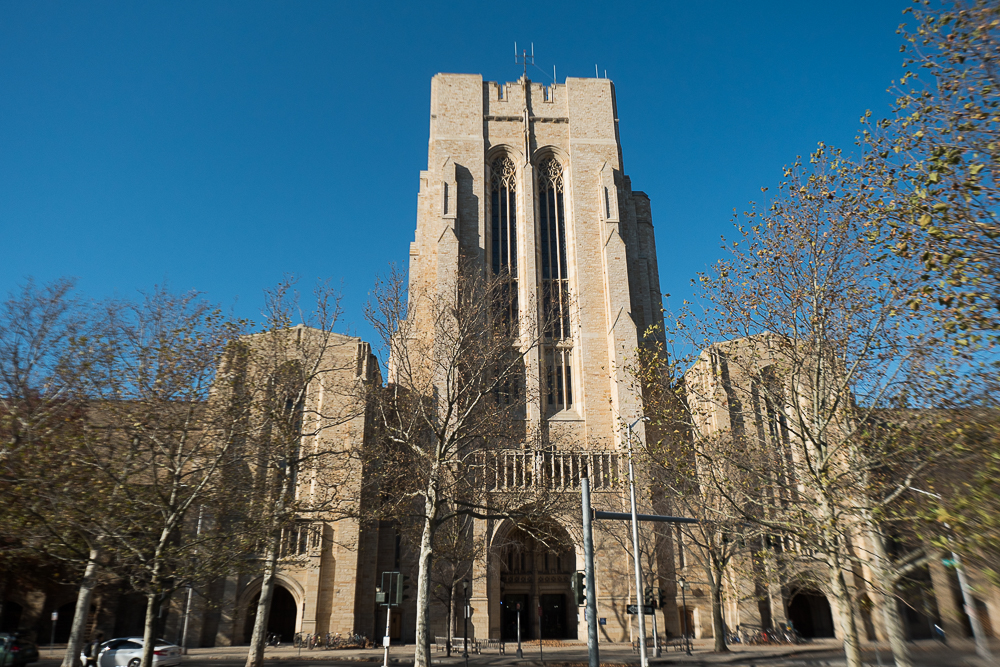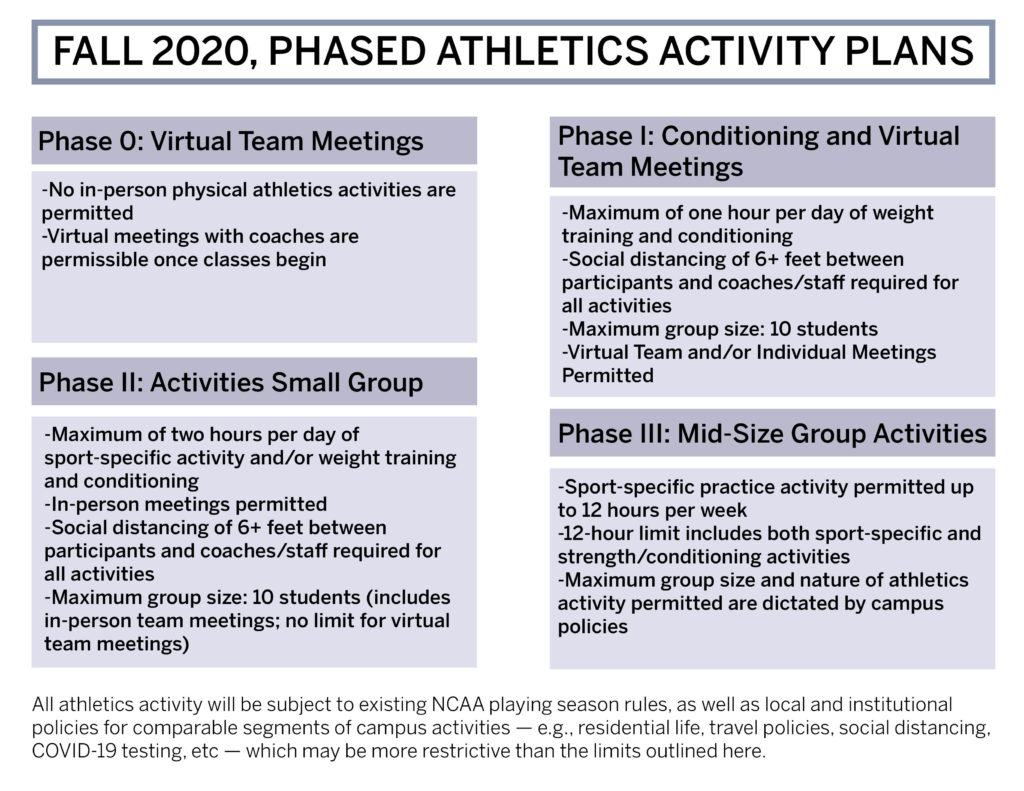Bulldogs return to limited practice in Phase I of Ivy plan
In Phase I, student-athletes can engage in up to an hour a day of strength or conditioning training compliant with social distancing measures.

Yale Daily News
After months of uncertainty surrounding athletic competition and practice, some Elis returned to structured practices last week.
On Sept. 21, student-athletes returned to limited practices as Yale entered Phase I of a three-phased approach for resuming training. The plan, designed by the Ivy League and approved by all eight Ancient Eight presidents, allows individual schools to determine timing and implementation of each phase. In Phase I, student-athletes can engage in up to an hour a day of strength or conditioning training compliant with social distancing measures.
“I’m so just thankful … [for] this opportunity,” Yale football head coach Tony Reno said. “When you look at it leaguewide, we were the first and one of the few that are not only on campus but [also] allowing our athletes to go back to doing what they love to do. You can’t compare it to a traditional fall season because we’re in such an untraditional time. What you can compare it to is the opportunities that our peers have.”
In July, when the League announced its cancellation of all fall-semester competition, it also announced that it would implement a phased return to practice, with all teams starting in Phase 0. In Phase 0, no in-person physical activity was allowed, and virtual team meetings were permissible only once classes began for the fall semester, according to an Ivy League graphic posted on the Cornell Athletics website.
Under Phase I regulations, teams are allowed to practice for up to one hour each day. Each team has the discretion to allocate the time as it sees fit — the guidelines allow in-person weight training or conditioning sessions in which athletes are masked, socially distanced and in groups of 10 or fewer students at a time.

The Yale football team, which would usually be several games into a 10-week season by this time of year, practices five times a week, spending four of its five weekly hours on weight and strength training. Once a week, on Wednesdays, the team uses its hour for an outdoor conditioning session, Reno said.
Reno told the News that the start of Phase I was the first time in months that many members of the football team had access to a gym and proper equipment; those looking to keep in shape often had limited access and could only engage in workouts that required less or no equipment.
Julia Zhukovets ’23, a member of the women’s squash team, echoed that sentiment. Zhukovets told the News that — having gone a summer without access to the gym — “the chance to lift now is beyond amazing.”
“I got used to [all safety protocols] after a few times,” Zhukovets said. “Yale Athletics is doing a great job and trying their best to keep everyone safe but also to keep us in shape.”
In addition to the rules set by the League, Elis participating in the return to practice must check in with temperature screenings and complete the campuswide requirement of daily health checks.
Student-athletes enrolled in residence have the option to return to practice, but it is not mandatory. Unenrolled students are unable to attend in-person practice sessions with their teams regardless of where they are physically located, but are allowed to continue to participate in virtual team meetings on Zoom.
“All student-athletes have the option to discontinue participation in practice activities at any time due to concerns related to COVID-19 with absolutely no repercussions,” Yale’s Associate Athletic Director for Strategic Communications Mike Gambardella said. “Only student-athletes enrolled in residence are able to take part in the phases due to NCAA regulations and the community compact.”
Per the Ivy League, fall sports are allowed a practice season no longer than nine consecutive weeks in the fall term, with discretion on dates given to each school’s leadership.
No schools in the conference have progressed past Phase I yet, and restrictions will continue to loosen through the second and third phases. In Phase II, the daily allowance of in-person physical activity increases to two hours and expands to include sport-specific activity in addition to the strength and conditioning allowed in Phase I. In Phase III, in-person physical activity is permitted for up to 12 hours per week, and maximum group size, which is set at 10 in phases I and II, is dictated by campus policies. The University’s current regulations do not allow for more than 10 people per gathering.
On top of Ivy regulations, all activities must adhere to the requirements set by each member university.
While other Division I conferences in the country have allowed looser restrictions on practice and even allowed competition, Reno told the News that he believes the Ivy League’s approach is the correct one, protecting the health and safety of players.
“At the end of the day, people are gonna say, ‘We should have done it the way Yale has done it,’” Reno said. “Safety is paramount.”
Yale’s Ivy peers Harvard and Cornell both entered Phase I on Monday.
Angela Xiao | angela.xiao@yale.edu







